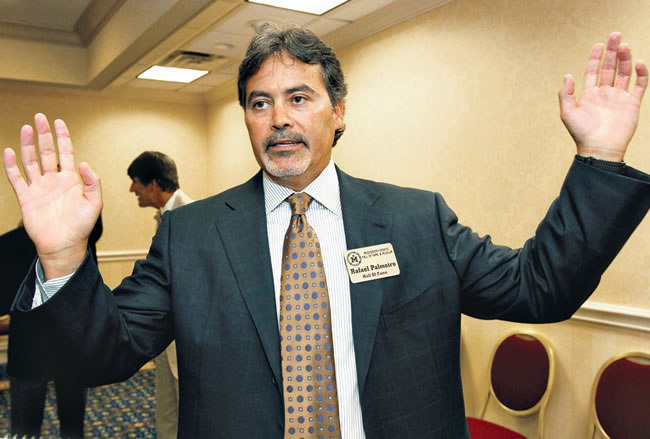Bonds Is Hall Of Fame Worthy
Barry Bonds believes he deserves enshrinement in baseball’s Hall of Fame and museum of questionable history.
I don’t know how anyone could argue otherwise.
By his numbers alone, Bonds in one of the top five players in Major League Baseball history. His combination of speed and power may have only been equaled by his uncle, Willie Mays, and the second star of the Big Apple’s famed centerfield trio, Mickey Mantle. Regardless, Bonds’ Hall of Fame eligibility class next year will be a litmus test of the lingering suspicions regarding those who played in the steroid era. So far, voters haven’t been very sympathetic.
 [/media-credit]
[/media-credit]A positive steroid test didn’t stop Rafael Palmeiro from being inducted into the Mississippi Sports Hall of Fame
The stigma of steroid involvement, whether admitted, proven or even suggested, is very real. Mark McGwire, who seemed to be a first ballot shoo-in, was denied inclusion by a great margin. Rafael Palmeiro also hasn’t gotten a sniff even from those for whom he surpassed the standard measures for inclusion – 500 home runs (he had 569) and 3,000 hits (he had 3,020). Juan Gonzales, a two-time MVP who was named in the Mitchell Report, has never gotten more than 5.2 percent of the vote.
Bonds, and his possible class of 2013 teammates Roger Clemens and Sammy Sosa, will find the going tough, even though at least two of the three will likely get accepted in relatively short order.
Part of Bonds’s reasoning is that he was better than those who have so far been left out. No question about that.
McGwire was a one-tool player who rode the long ball to fame and over-hyped glory. Palmeiro, while a much better all-around player than McGwire, was never one of the game’s best. Instead of being dominant, Palmeiro played at an above-average level until suddenly, and unexpectedly, he finished with some of the greatest numbers in the history of the sport. Still, the closest he got to an MVP award was sixth in 1996.
Bonds has been linked to steroid use for years, and recent photos of the suddenly slimmer former ball player just adds to the pile of circumstantial evidence. Unfortunately for his accusers, that’s all it is, unconfirmed reports that have never been proven. Even in the baseball Hall of Fame one would presume you are innocent until proven guilty.
Then again, the Baseball Writers Association of America has never been one to let facts get in the way of induction, nor has it let past indiscretions negatively affect voting.
The Hall already has a number of racists, alcoholics, spitball pitchers, spousal abusers and amphetamine users on its roster. That is how it should be. It’s the Hall of Great Players, not Hall of Good People. The voting criteria does have a character clause, which is often used to delay admittance and has been traced back to the game’s first commissioner, Kenesaw Mountain Landis. In addition to helping remove the stain of gambling from the game, he also believed it was his duty to keep African-American ball players out of the league. For the record, Landis was inducted in 1944.
Without question, Bonds will lose some votes on gruff alone. Baseball writers love to punish those who didn’t play the media game well, and dealing with the press was never high on Bonds’ to-do list. Not being nice, and the voters’ inability to compare statistics across eras, kept Jim Rice out of the Hall of Fame for years.
Did Bonds use performance-enhancing drugs as a player? I believe so. Nothing else explains the physical and performance changes that occurred so late in his career. I also believe, as the Mitchell Report showed, that steroid use in baseball was rampant to the point where it wasn’t even being hidden. Unless the writers agree to ban everyone who played between 1990 and 2010, then Bonds has to get in.
One does not make a moral stand by judging others by an immoral standard.





